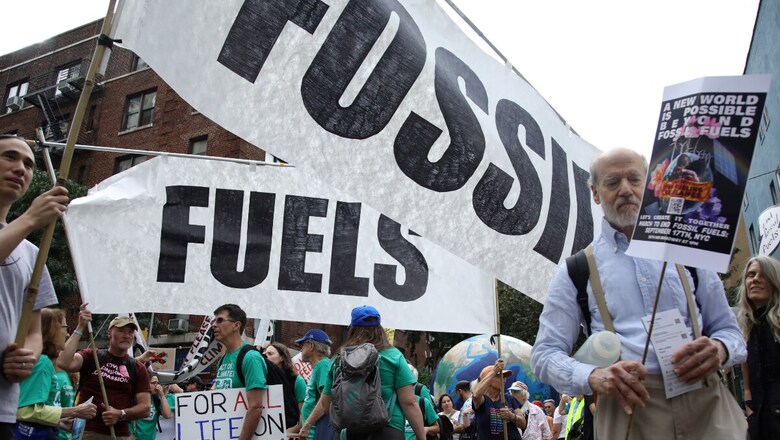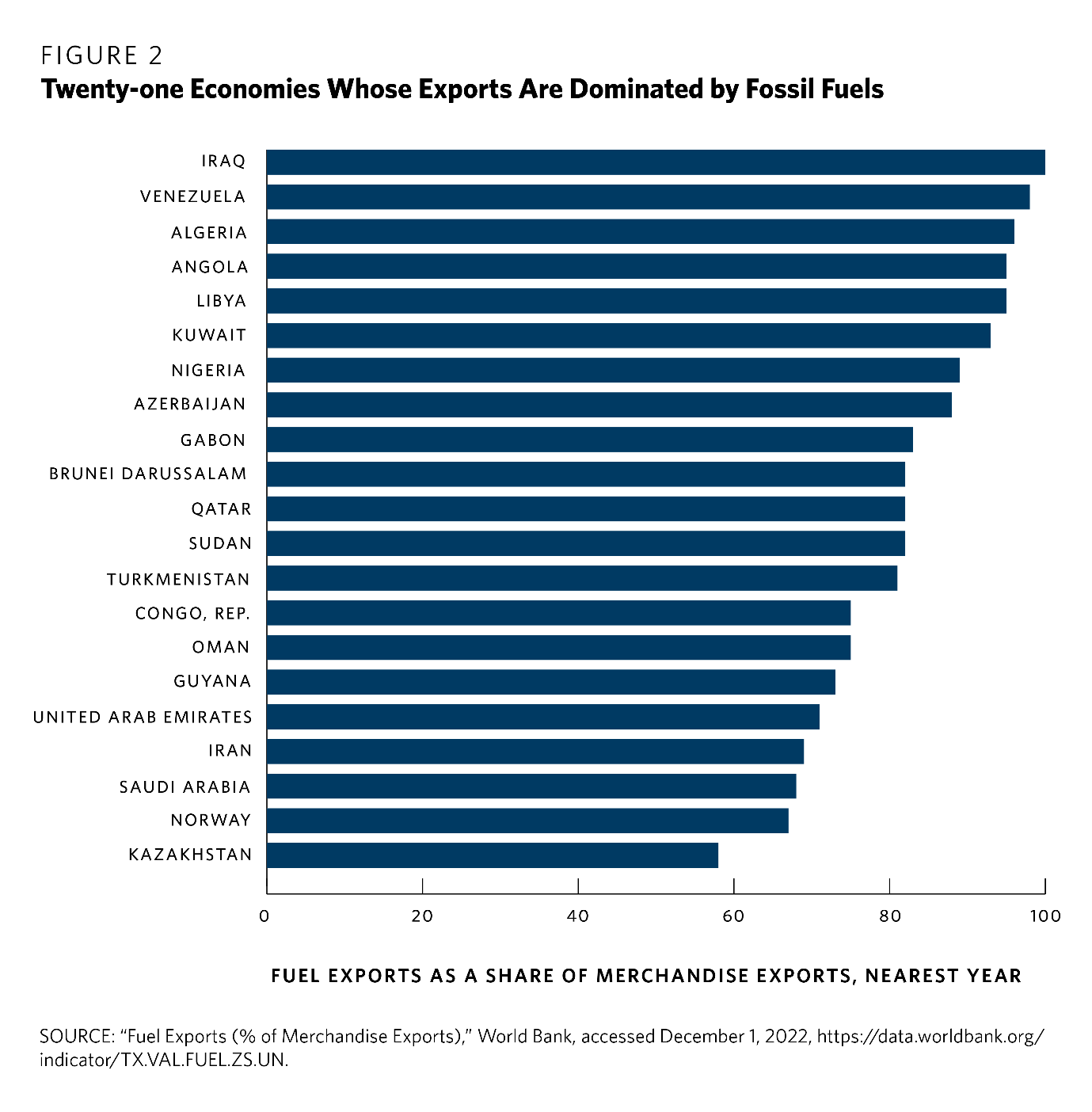
views
The Global South has a right to demand financial help and the developed world needs to provide this. The Global North seems to be avoiding all responsibilities and looking at even the climate crisis as an economic game where the winner takes all. This is building a stage where the financing to meet the zero emission targets keeps rising but the efforts to bridge these financing gaps are too little and too sparse. Where trillions are required, even a few billion dollars are not spent. The climate crisis is now a financial crisis, one that needs the intervention of all the financial regulators in the world.
Many things are wrong with this approach. One, it makes the Global South a victim or a suffrage of the developed world. Second, this victim mindset shapes the debate between these two parts of the world, which means that it becomes a blame game or, worse, it seeks financial aid for making changes to climate mitigation strategies. Neither side looks at the solution as a whole or where will the capital come from to resolve this crisis. The crisis is not waiting to resolve itself or for either part of the world to see itself differently.
Secondly, the Global North did not meet its commitment made in 2009 of $100 billion by 2020, at the Paris Conference, to fund the transition of the Global South. At the United Nations Climate Change Conference (COP26), a climate finance delivery plan by the developed countries for achieving the $100 billion goal by 2025 was set. They also reiterated at COP26 that the earlier commitment by developed countries will be met by 2023. The commitment to transition is increasing at the same time. The IPCC study in 2018 revealed that developing countries’ climate finance requirements stood at $600 billion per year between 2020–50 in additional investments for the energy sector alone. That’s a per year investment required and that is the gap that cannot be met by investments by the country’s public and private sectors.
The cumulative investments (2015–30) required by South Africa for achieving its NDC targets is R8.9 trillion ($697.55 billion). The cumulative cost of financing India’s NDCs till 2030 stands at Rs 245.61 trillion ($5.26 trillion). If that sounds high in trillions, China needs even more: a report by COMMIT (2018) estimates the country’s cumulative financing needs for 2016–30 to be close to CNY55.95 trillion ($8.42 trillion). What has come from the Global North to fund this requirement has come only in the form of debt at market rates, making the funding of the climate crisis a market-linked opportunity or exercise.
The Global South has resorted to playing the victim and asking for higher amounts. As a result, it is playing into the rules of the same lobby that has denied climate change for the better part of the last few decades. If we look at the rule book developed by Exxon to muddle and divert the climate debate, one of its clearest components is to admit the climate crisis publicly but then work behind the scenes to ensure that no policy change is ever carried out that will actually affect the polluting industry. Not only that, it is clearly revealed that Exxon actually funded research to create a false narrative that the climate activists were creating a false scare and even tried to discredit the climate crisis research.
According to a newspaper report, Frank Sprow, then Exxon’s head of corporate research, sent a memo to colleagues a few months later articulating what would become a central pillar of Exxon’s strategy. “If a worldwide consensus emerges that action is needed to mitigate against Greenhouse gas effects, substantial negative impacts on Exxon could occur,” wrote Sprow. “Any additional R&D efforts within Corporate Research on Greenhouse should have two primary purposes — protect the value of our resources (oil, gas, coal) and preserve Exxon’s business options.”
These two purposes Exxon highlighted are the same for the Global South’s fossil fuel exporting economies.
Transition Costs and Bearing it
Global South impact of temperature change

The developing world or the poorer economies have convinced themselves that the cost of transitioning from a fossil-based or polluting economic growth to a green or sustainable economy is a costly and difficult affair. They do not have the resources to do so nor do they want to slow down, hence the developed world should pay for this transition. I have shown that both transition cost and the mitigation cost required are beyond their current capacity to fund. But that does not mean it is beyond their ingenuity to fund. They have to find a way to build a market for green technology, they have to find a way of getting their growing economy to fund and invest in sustainable growth. Everything cannot be left to the rest of the world. To grant or solve this is everyone’s problem and there are many solutions to it.
There are 21 economies for whom coal, petroleum, and natural gas account for a majority of merchandise exports; in six of these countries, fossil fuels represent more than 90 per cent of those exports. Even in a world where some non-renewable energy generation continues, the economic models of these countries will require reinvention.

Nineteen of the 21 countries that have fossil fuels as their largest exports fall into the Global South. That does not mean that the Global South’s needs or their narrative is being driven by these 19 countries. It can be influenced by these countries as they have an inherent bias to protect their exports and their economies. But the larger countries that drive the narrative for the Global South like Brazil, China, and India are the largest consumers or importers of these fossil fuels. Another interesting statistic: the largest investors in at least natural gas are the governments of Global North countries. The approach that the leaders are taking towards climate change individually is also important.

China sees climate change technologies as a clear opportunity for growth and in creating industries that never existed. It has become the largest and lowest-cost producer of solar panels, lithium batteries and EV cars by following a state-sponsored and driven model of owning everything in the supply chain from minerals to, dare I say, the customer. This does not mean it has given any carte blanche to its industry to curtail the use of fossil fuels. But its use of gas and solar continues to rise rapidly, though coal and oil dominate.

The Global South can be divided into three buckets for the sake of understanding its motivation. First, as pointed out in the graph, are the countries which are highly dependent on fossil fuels for export and economic growth. These countries will bear the highest cost of transition and will see a contraction in the economy if they were to move away from fossil fuels. The estimates for contraction range from 10 per cent to 50 per cent–this is just not bearable by the economic, social or governance structures in these countries. It will lead to collapse of all three and these companies will be indistinguishable from a war-ravaged economy. Expecting these countries to commit to a roadmap to suicide is not practical.
The second bucket is made up of large economies like China, India, Brazil, and South Africa. They are large consumers and even importers of fossil fuels, their economy is growing and they do not want to curtail growth by shifting to renewables too fast as to disrupt that growth. Moreover, they do not want to put curbs on fossil fuels and related companies or penalize the extraction industry despite their destructive impact on the climate.
These large economies have more than their fair share in the global narrative and they seem to be adopting the same rule book as Exxon did with muddling the climate debate. The rule is to talk about the problem but reduce the severity of the problem or the urgency of action by muddling the facts and passing the blame to the developed countries while doing nothing. This basically plays well into the hands of the entrenched fossil fuel lobby, not just present in these countries, but those that are suppliers to this country. Ignoring the urgency of the action by the Global South is also self-destructive as the rise in temperature is already causing droughts, flash floods, and extreme weather situations disrupting its population and its livelihood more than the Global North.
The third bucket is made up of countries that have neither fossil fuel resources nor a share of voice in the global narrative. Some of these countries are small and may be affected more by the climate crisis but they have no voice to have differentiated or better treatment.
The Global North is looking at the crisis as a financial opportunity and feels that it can recover the economic growth lost to China by lending capital for the transition. Capital that it would earn interest and income.
The climate crisis is not just a financial crisis, it is also a human crisis. The people of the Global South are already suffering from the effects of climate change, and these effects are only going to get worse if action is delayed. The markets have limits set out for returns so it is unlikely that the requirement for the countries can be funded through the market route. It is only if the global market rules are changed very thoroughly by the regulators that the capital flows change. Investment flows have to change from traditional instruments to green bonds. The periphery has to become mainstream.
Government needs to take the lead in financing the transition to a green economy that is fair and just, and that puts the needs of their people before market profits.
K Yatish Rajawat is a public policy researcher and works at the Gurgaon-based think and do tank Centre for Innovation in Public Policy (CIPP). CIPP has been working in the NUH area for years building a regenerative agriculture model. Views expressed in the above piece are personal and solely that of the author. They do not necessarily reflect News18’s views.




















Comments
0 comment